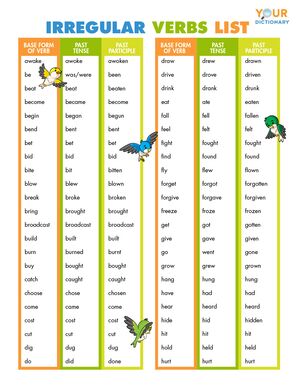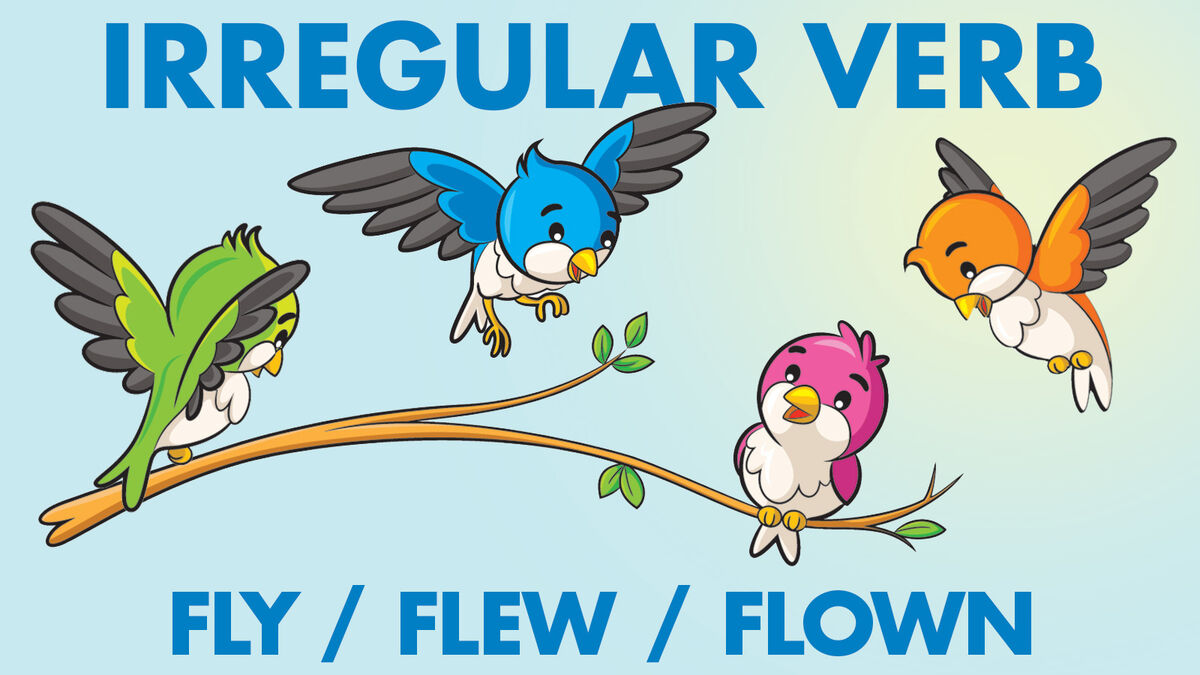

Irregular verbs do not follow the normal conjugation rules when it comes to verb tense. Explore an irregular verbs list to learn which words fall into this category. You can even print an irregular verbs list to use as a resource when needed.
List of Common Irregular Verbs
Irregular verbs are an interesting branch of the English language tree. Just when you got the hang of past and present participles, irregular verbs enter the scene. These verbs don't follow the simple rules of conjugation, such as turning walk into walked. Instead, they are irregular, so arise turns into arose and arisen. View a list of irregular verbs you might use in everyday conversation.
Base Form | Past Simple | Past Participle |
arise | arose | arisen |
bind | bound | bound |
bite | bit | bitten |
bleed | bled | bled |
burst | burst | burst |
cast | cast | cast |
cling | clung | clung |
come | came | come |
creep | crept | crept |
deal | dealt | dealt |
dive | dove | dived |
dream | dreamed/dreamt | dreamed/dreamt |
feed | fed | fed |
flee | fled | fled |
forbid | forbade | forbidden |
grind | ground | ground |
hang | hung | hung |
light | lit | lit |
mistake | mistook | mistaken |
overcome | overcame | overcome |
rid | rid | rid |
seek | sought | sought |
set | set | set |
shake | shook | shaken |
spend | spent | spent |
thrust | thrust | thrust |
upset | upset | upset |
wring | wrung | wrung |
Irregular Verbs Printable List
In the printable irregular verb list below, you'll find an alphabetical list of 89 verbs whose past tense and past participle forms do not end in -ed. Since these verbs don't follow standard rules, keeping a list handy can be really useful.

What's on an Irregular Verb List?
When it comes to an irregular verb list, you have three distinct columns. This includes the base form, past tense and past participle. See what each different part means.
Base Form
The first column contains the base form of the verb. The base form is the verb in its purest form — not present, past or continuous tense, and not even infinitive (meaning there is no "to" preceding it). It's just the verb, plain and simple. It serves as the foundation on which you conjugate the verb into all its different tenses and forms.
- Are you going to eat a 5-foot-long hot dog?
- Let's draw a picture.
- It's time to begin the class.
Past Tense
The second column contains the verb in its past tense form. This is the form you use when you talk about something that happened in the past — just one event, not relative to any other event. Since these words are irregular, you'll notice they don't have the common -ed at the end like regular verbs. See a few examples at play.
- I ate a 5-foot-long hot dog.
- She held the door for me.
- We hid from the teacher.
Past Participle
The third column contains the verb in its past participle form. The past participle is the form we use after have or had in present and past perfect sentences. Check out a few different example sentences using past participles.
- We have eaten at Roma several times.
- He had never flown in an airplane before his trip to Guatemala.
- I have built my model for the contest.
We can also use the past participle as an adjective.
- The stereo is broken.
- The picture is hidden.
- The lake is frozen.
Practice Is the Name of the Game
The irregular verb list contains the most common irregular verbs used in American English. So, if you concentrate on learning this list, you'll be well on your way to mastering these tricky verbs. And, once you're familiar with the list of irregular verbs, feel free to take on any of these verb games.